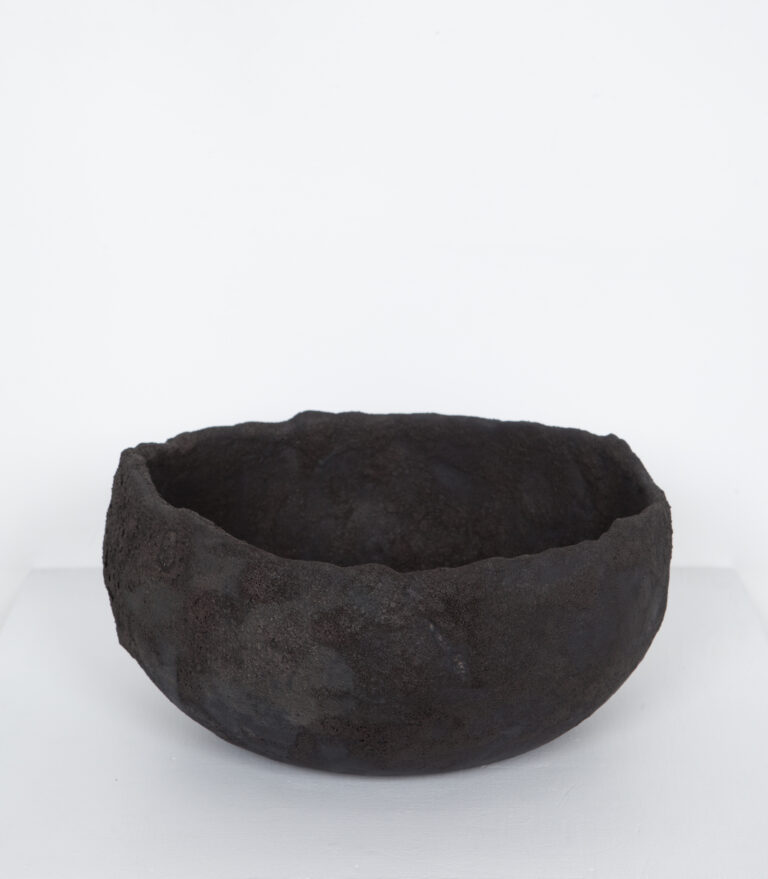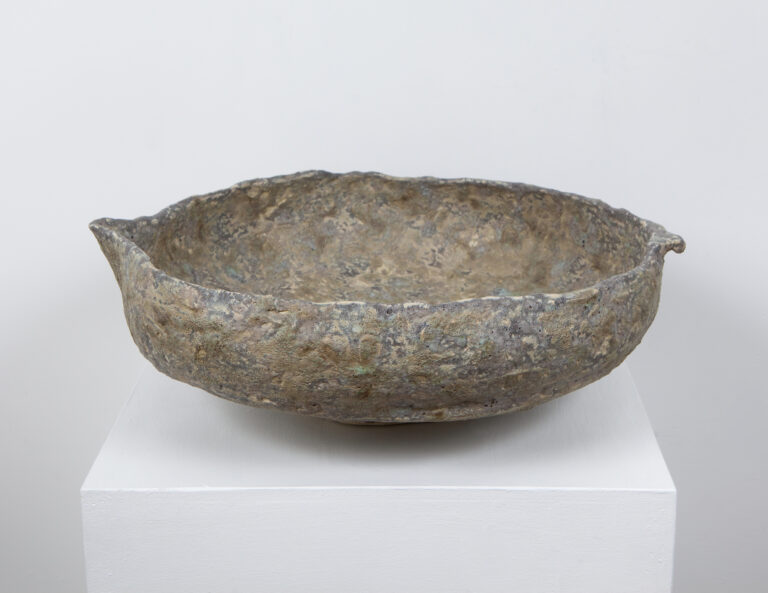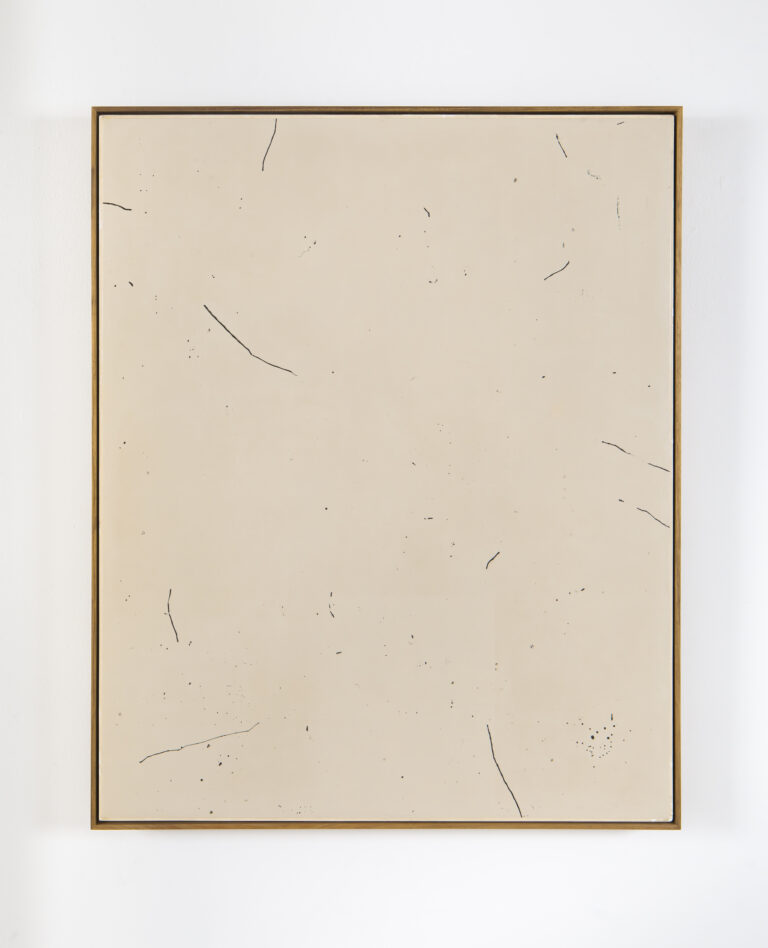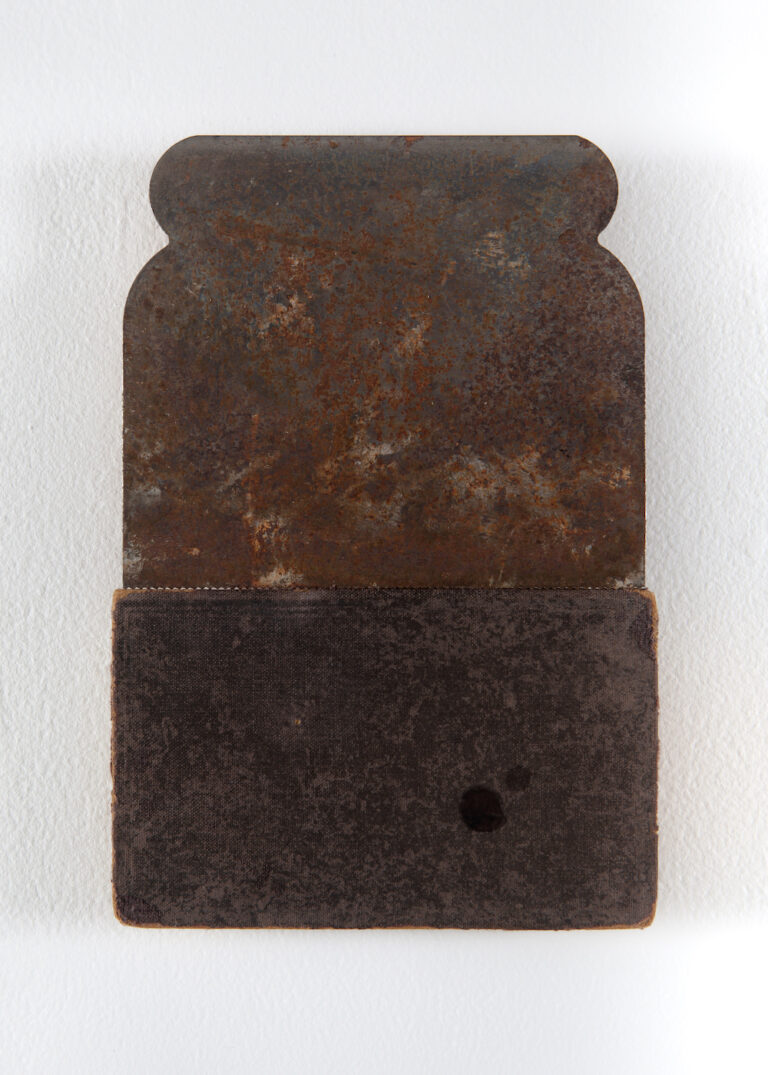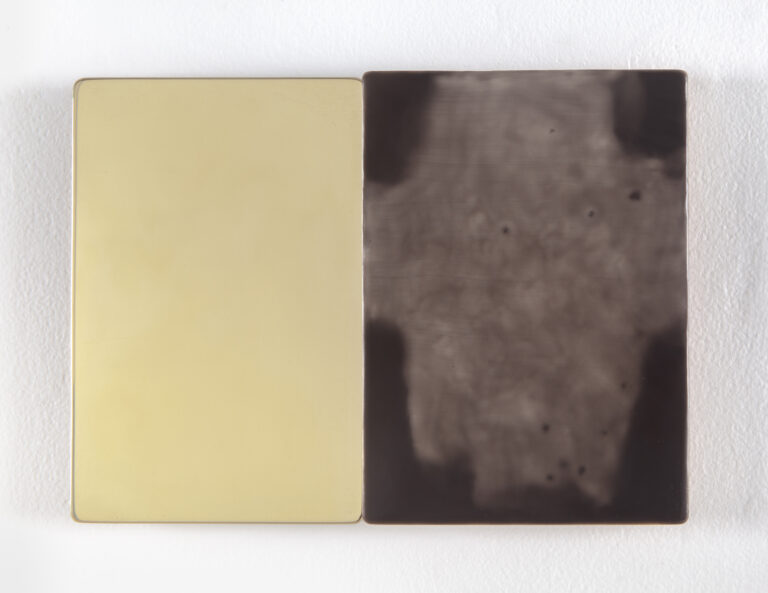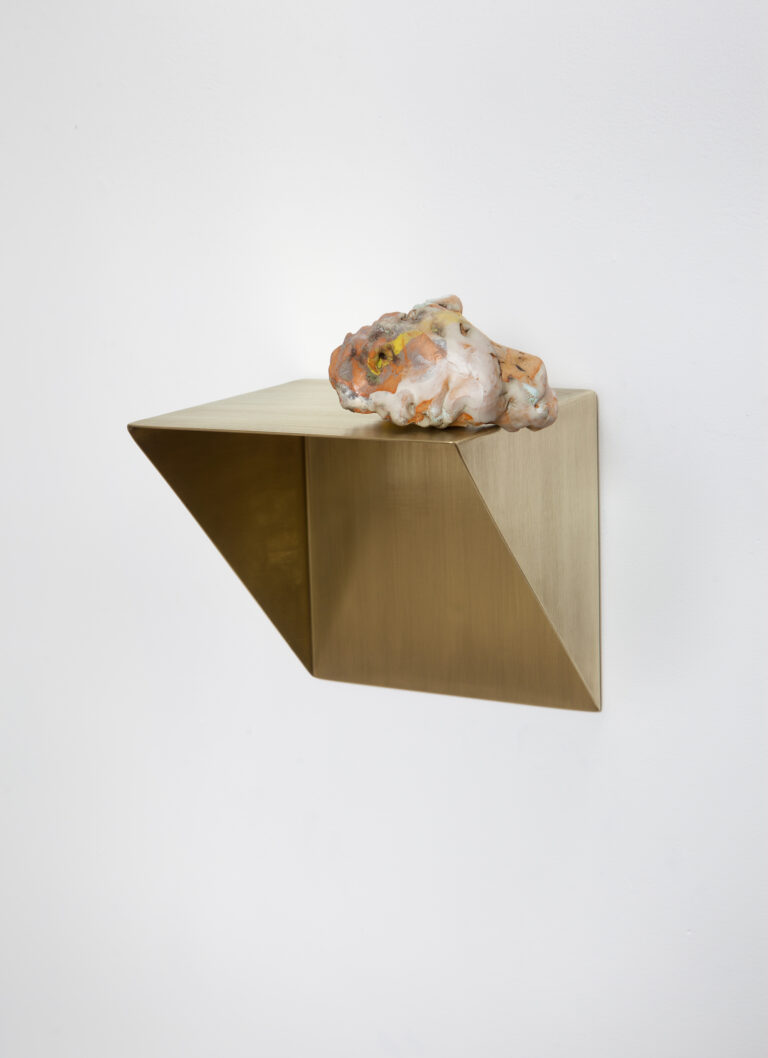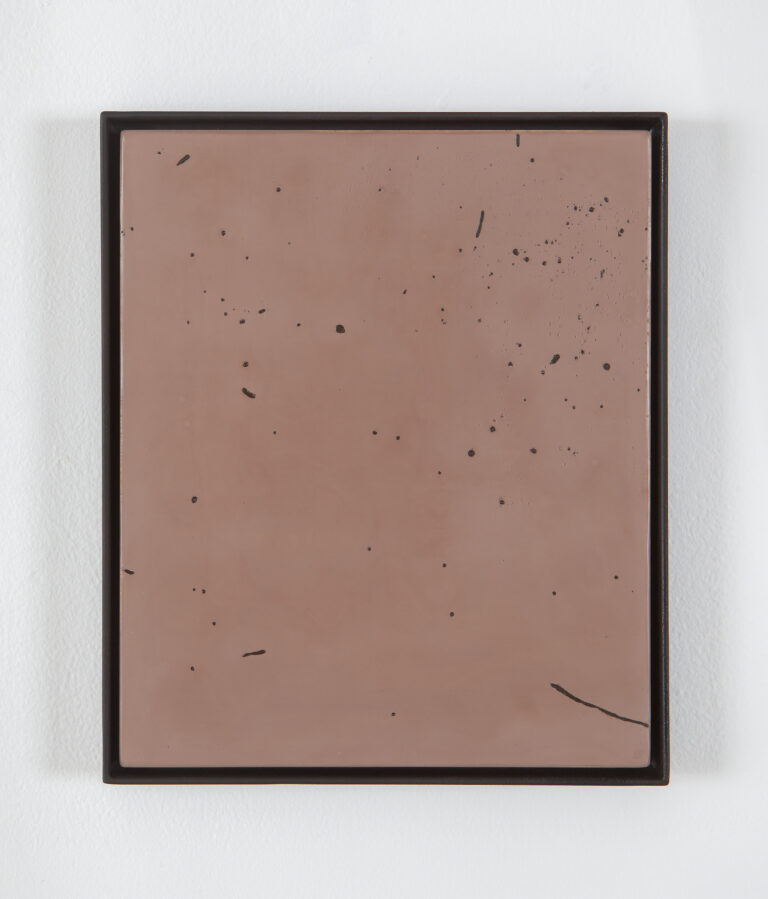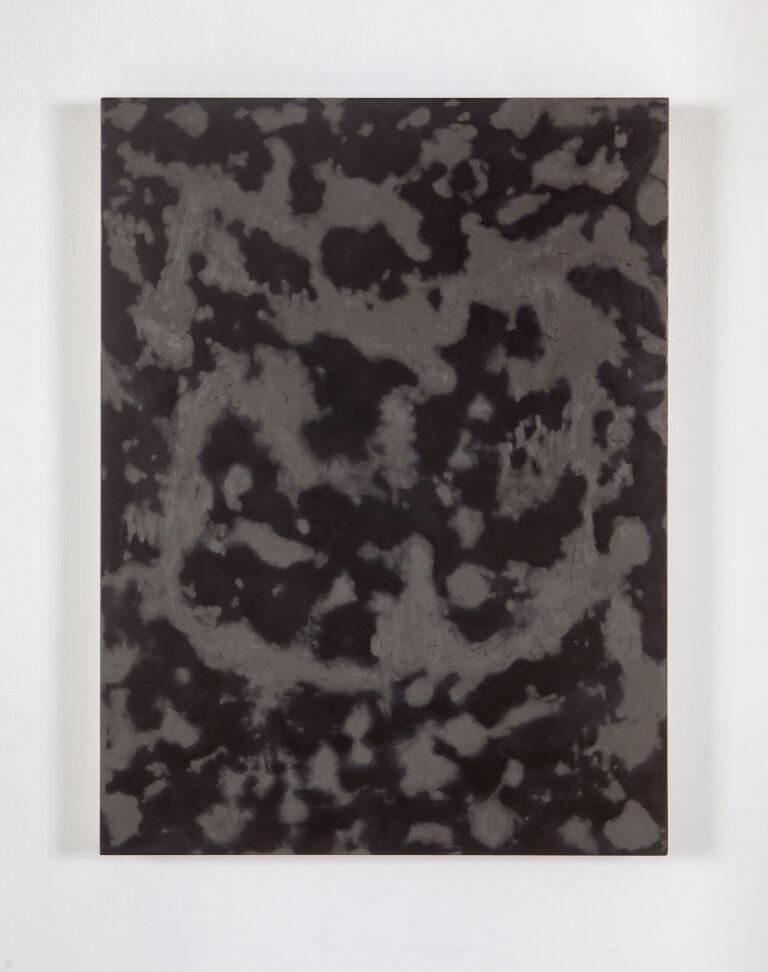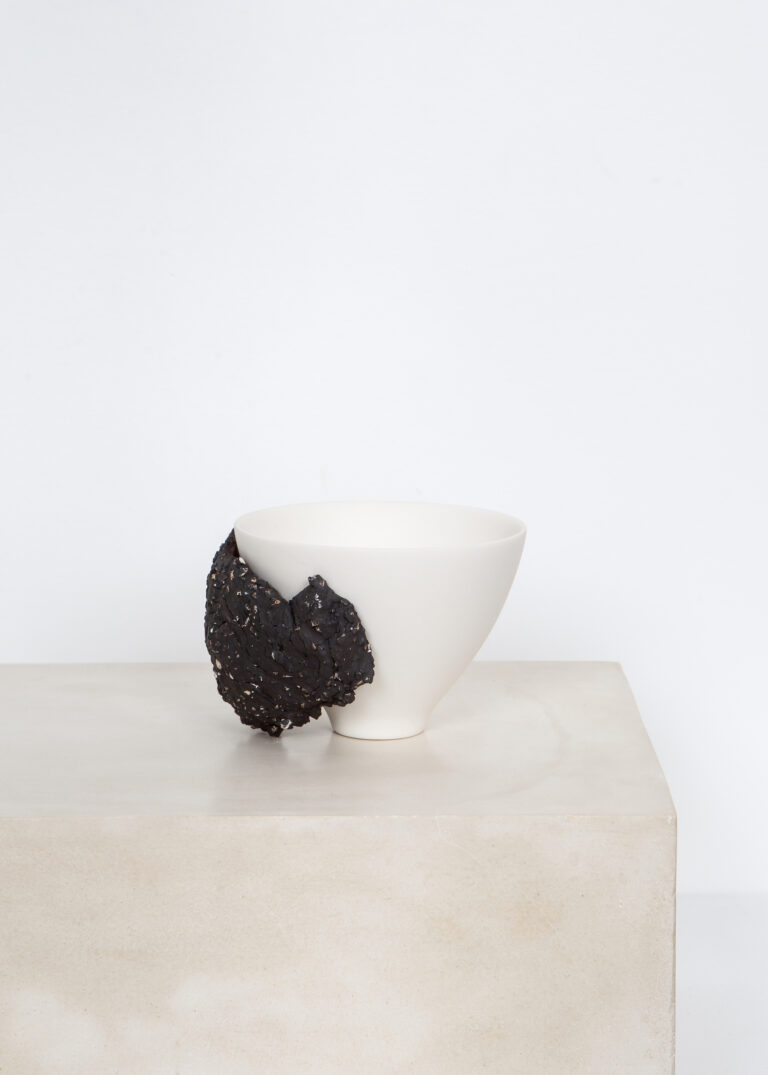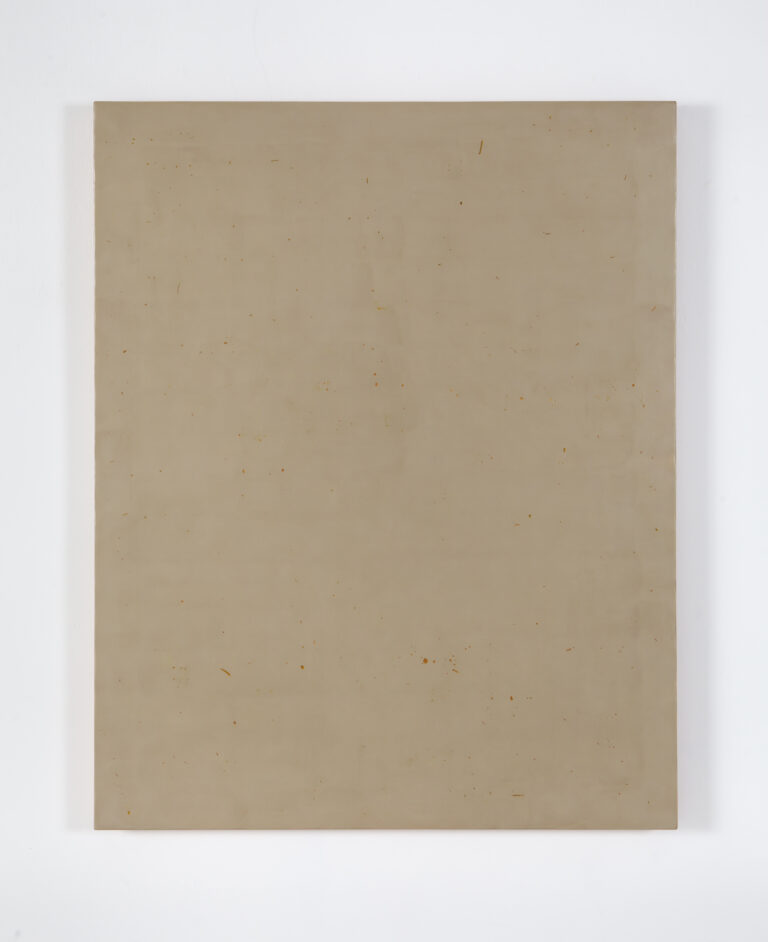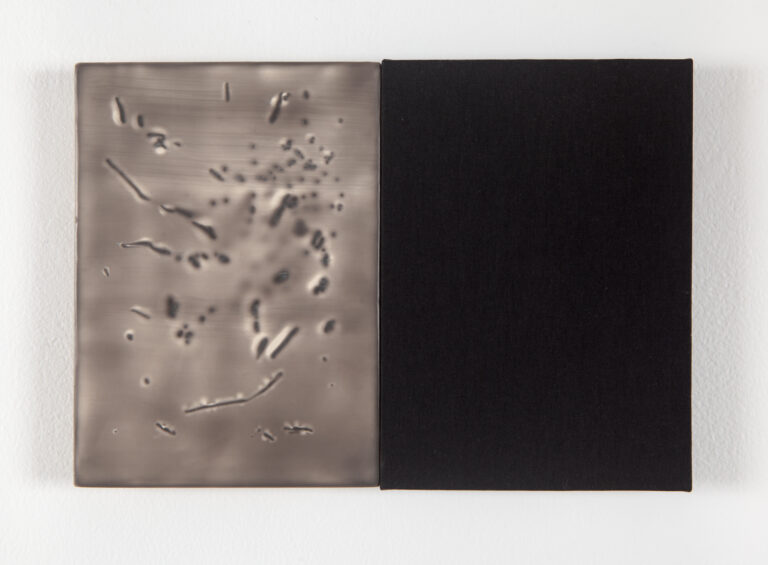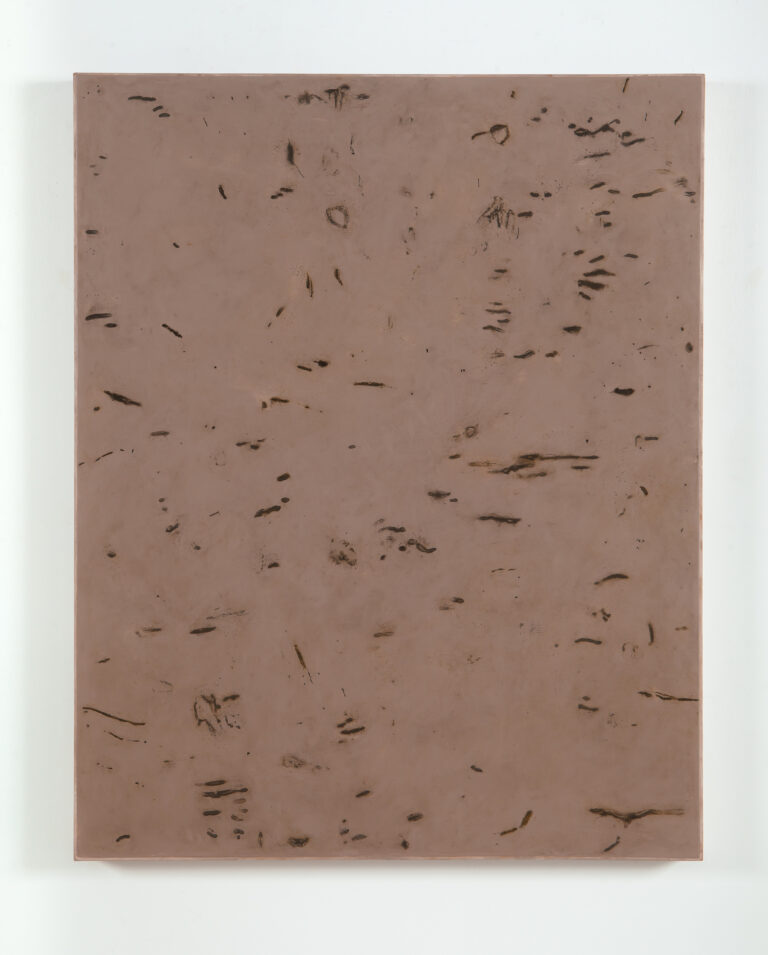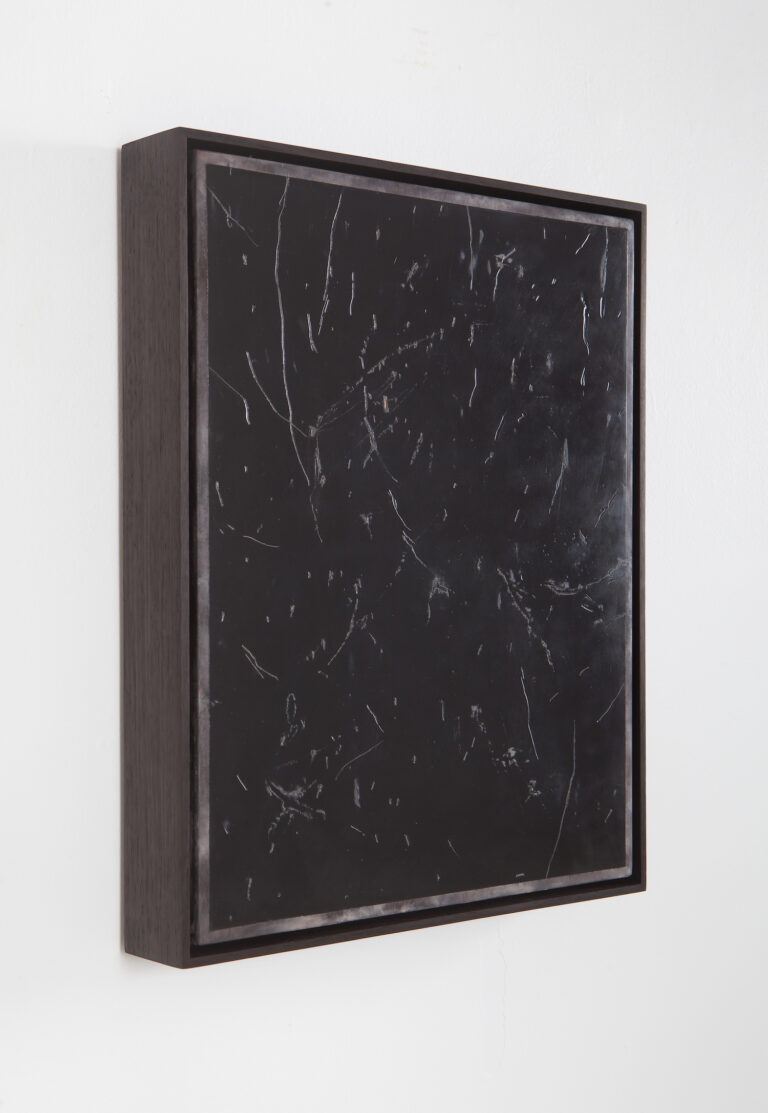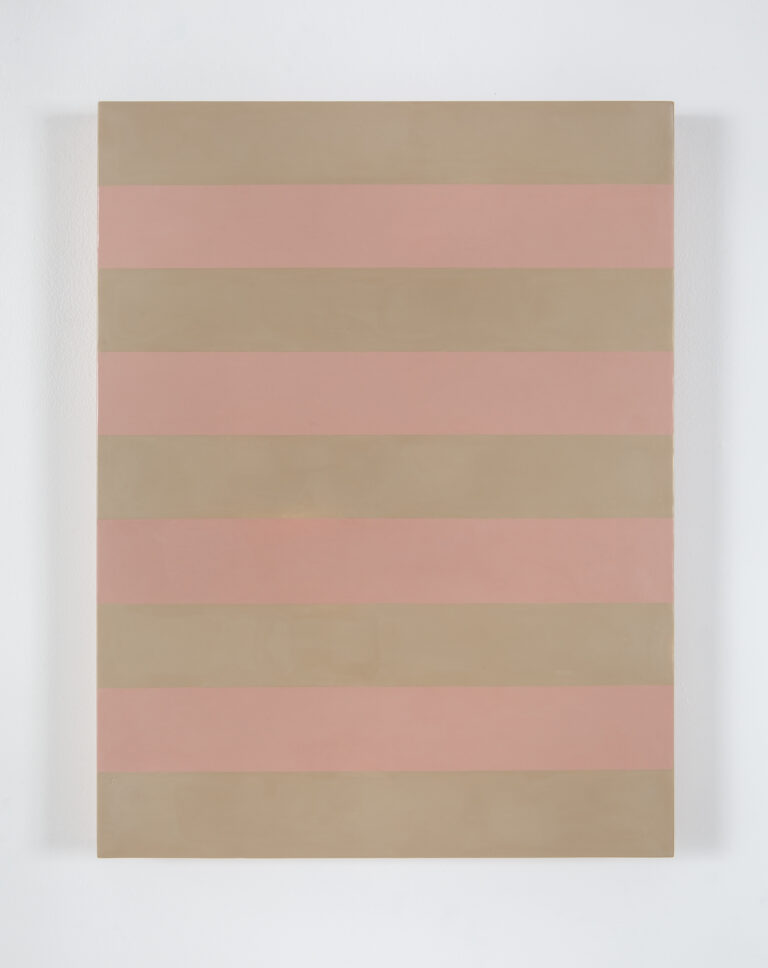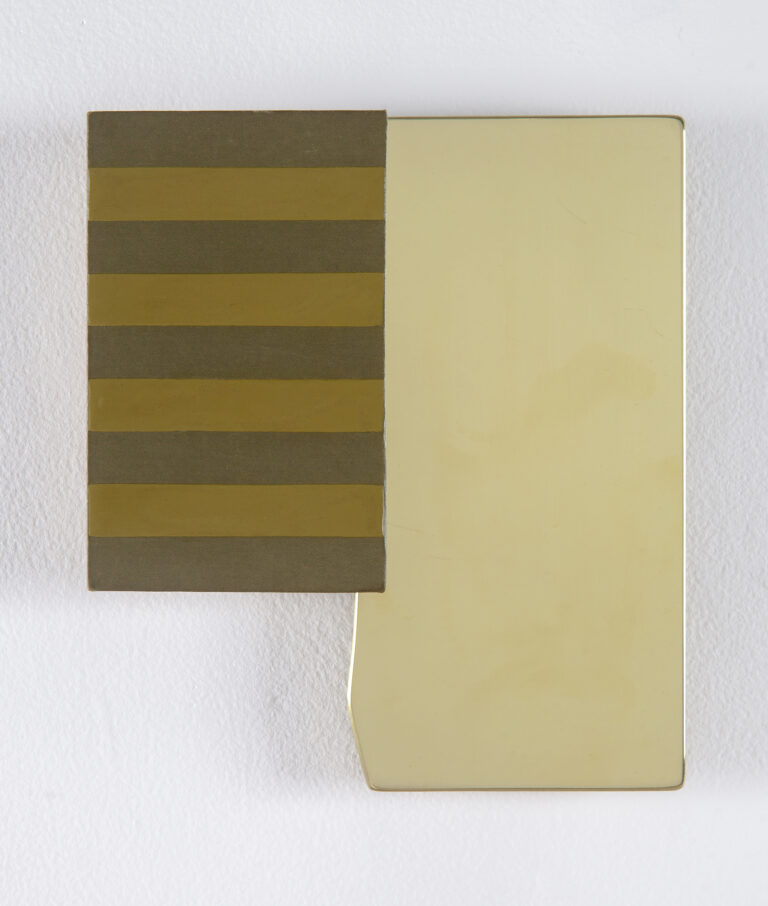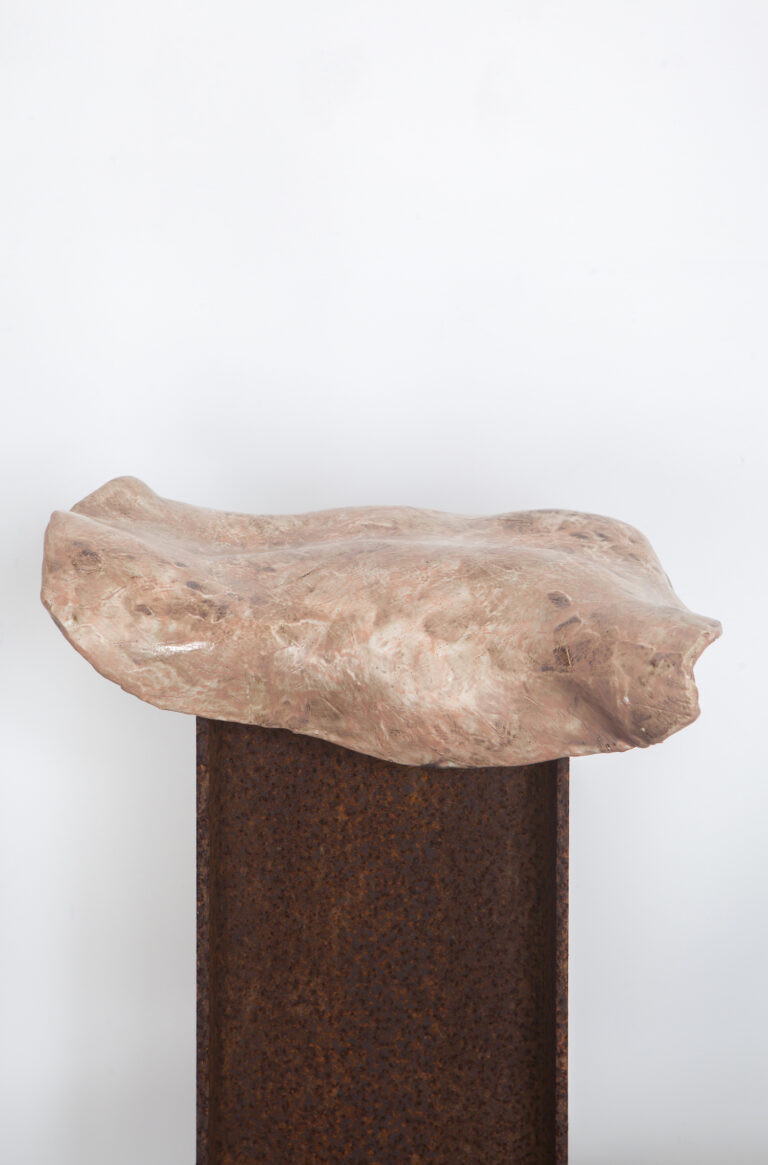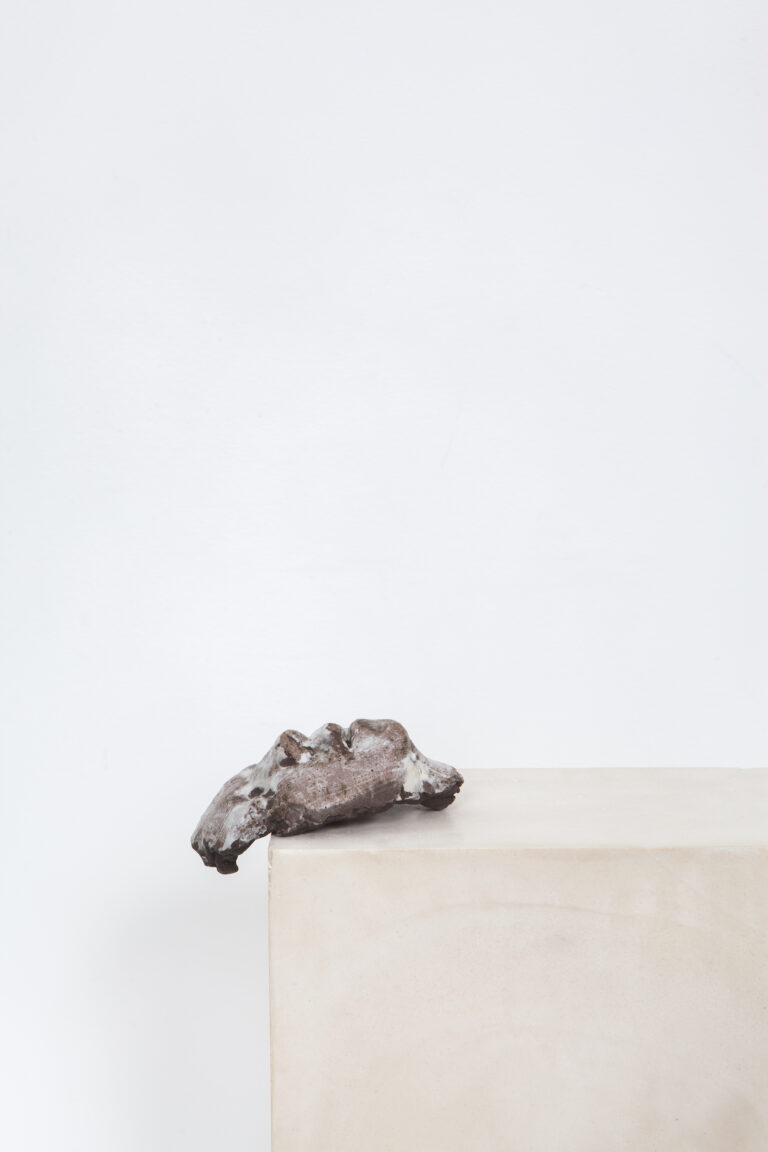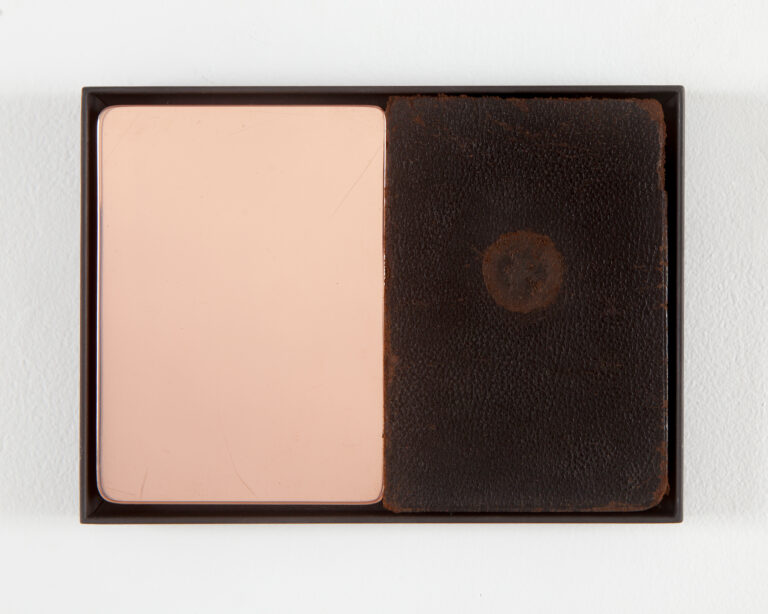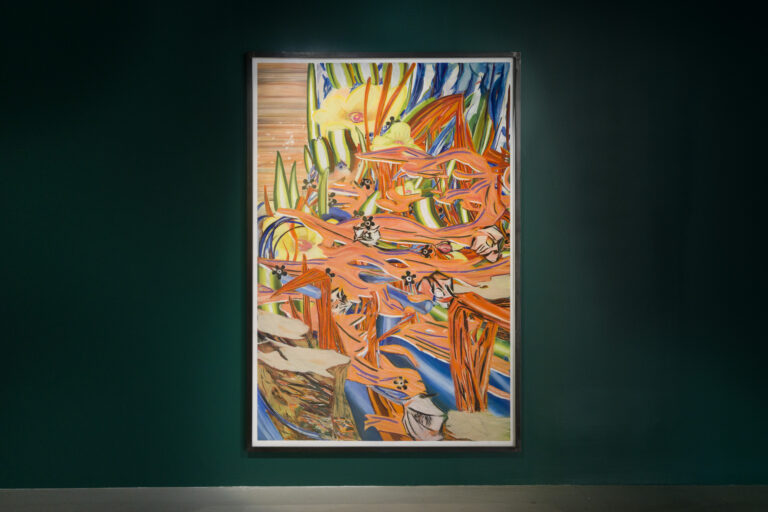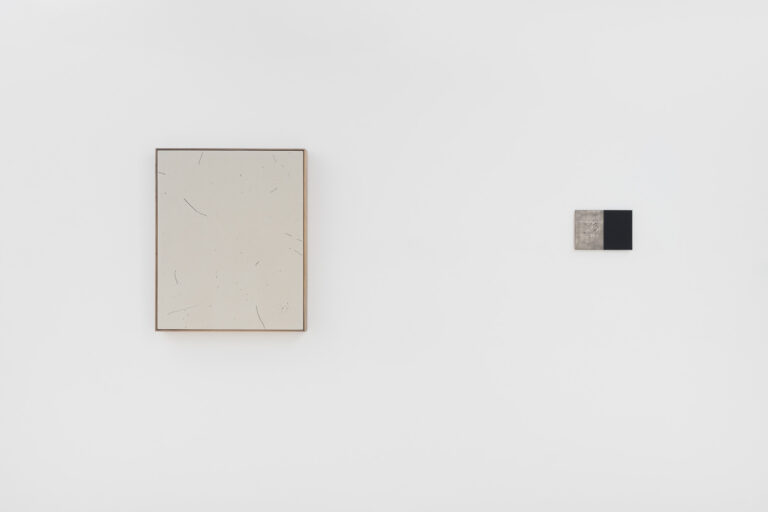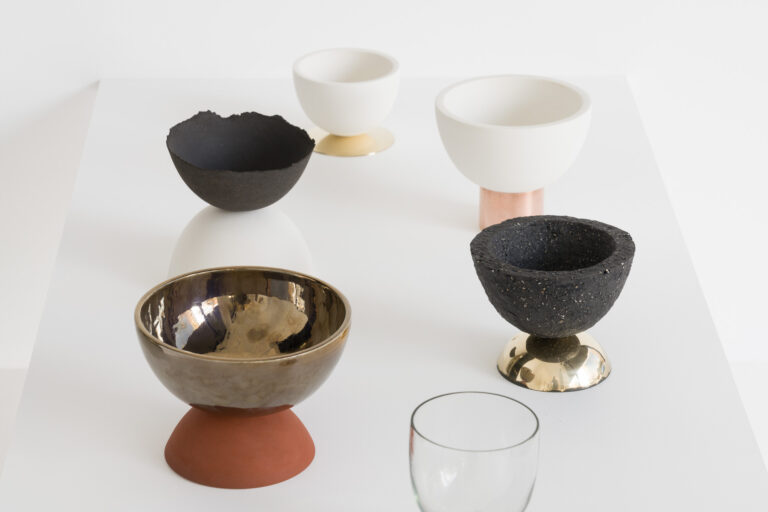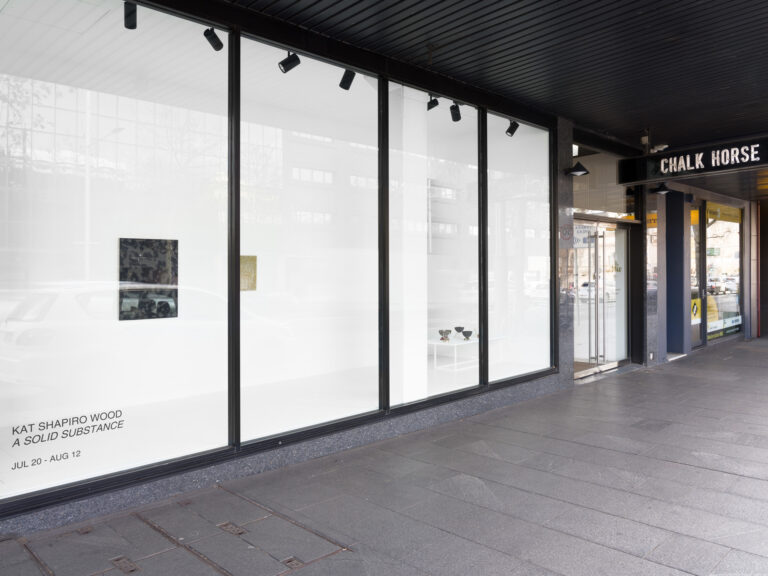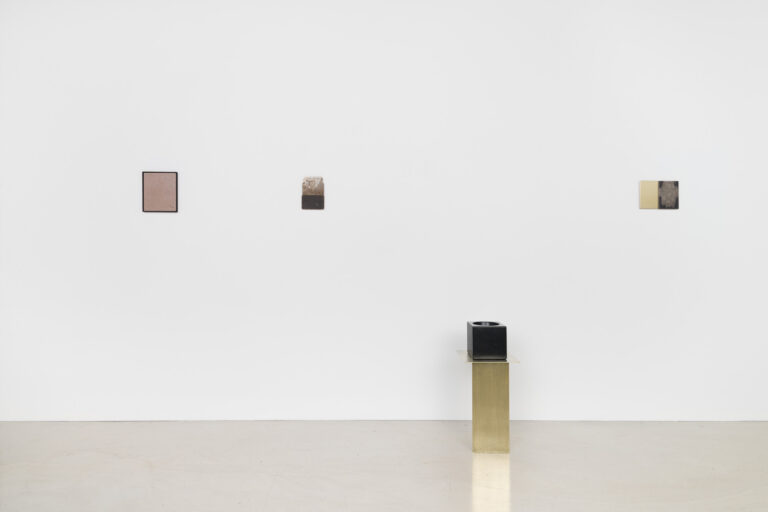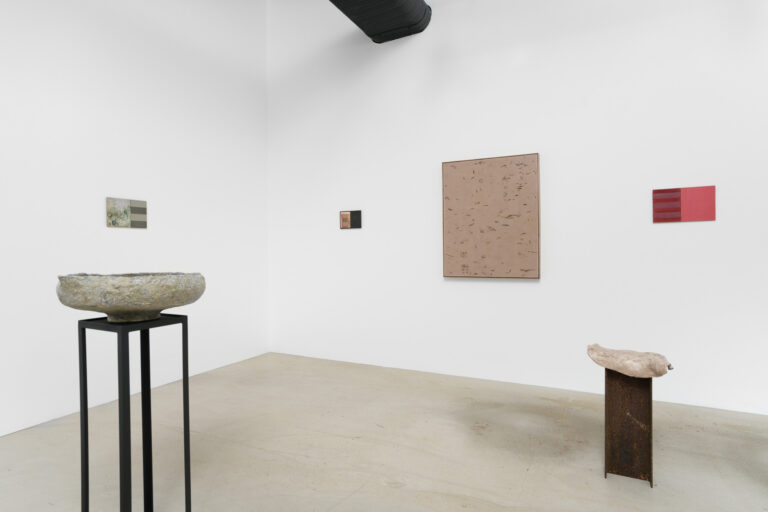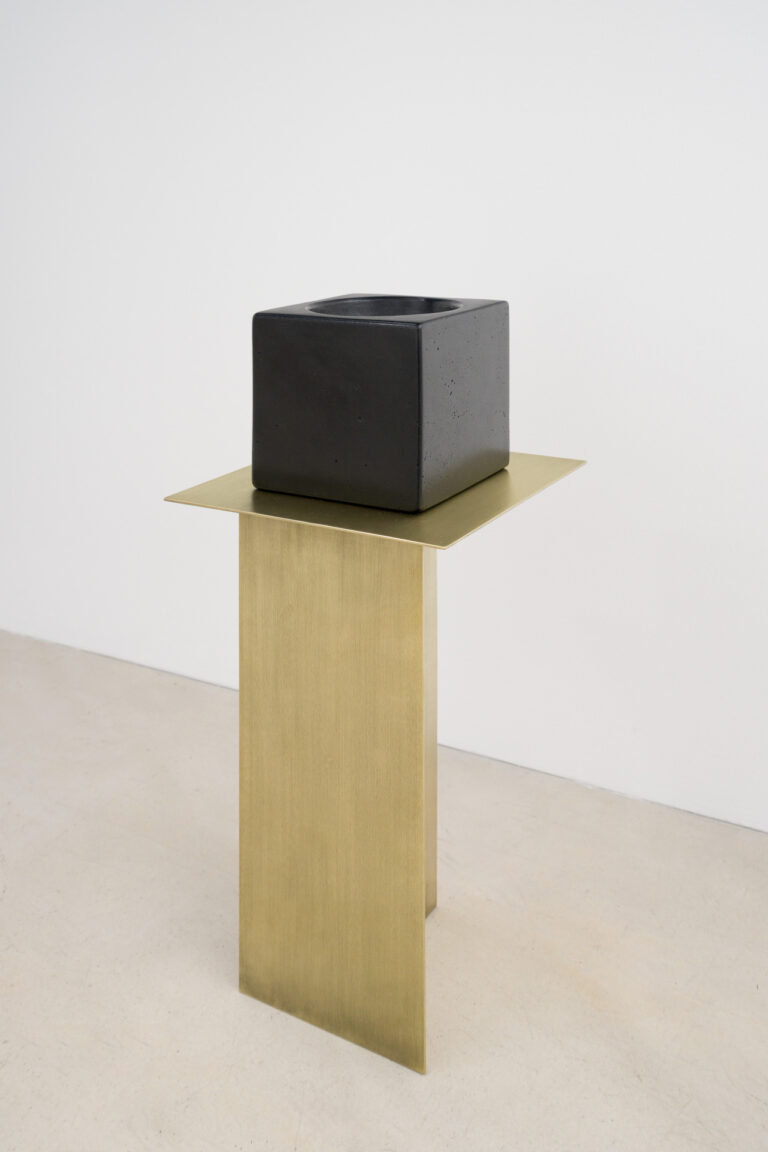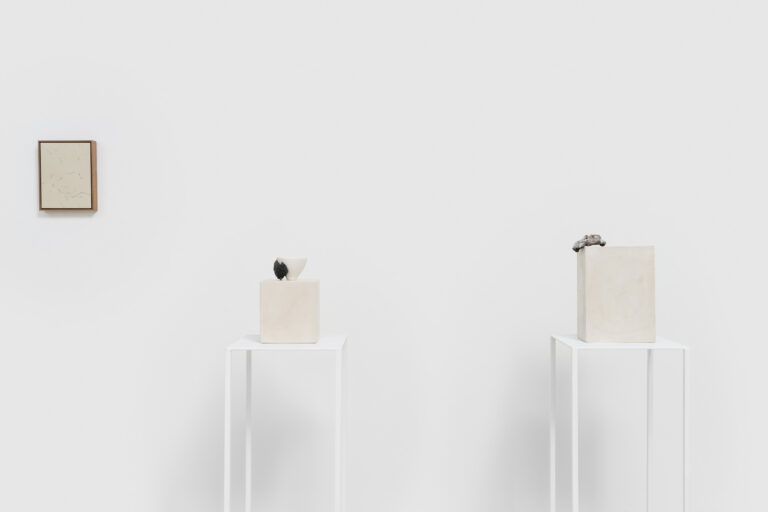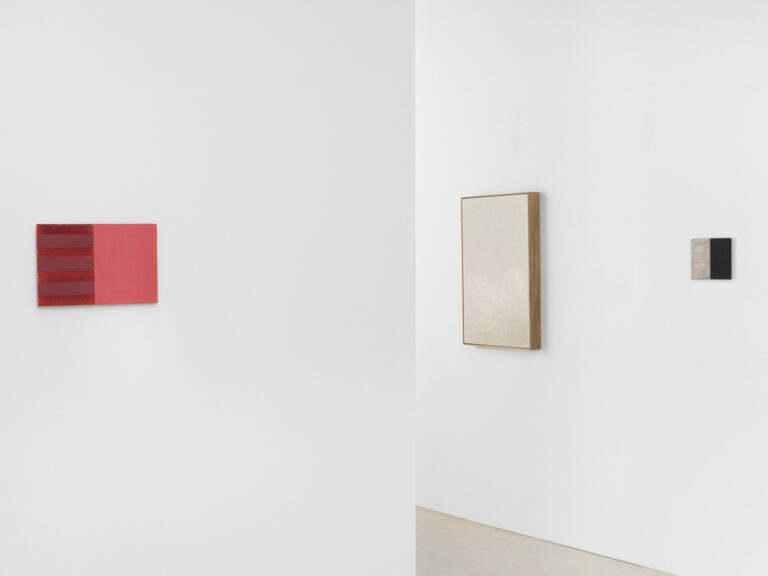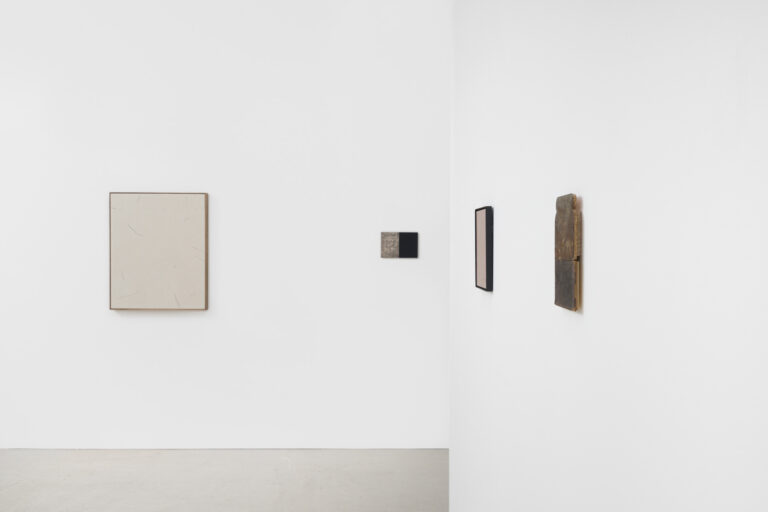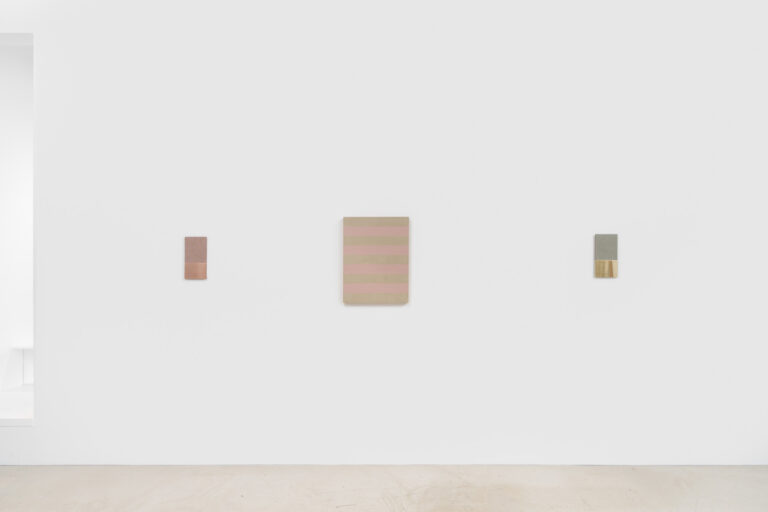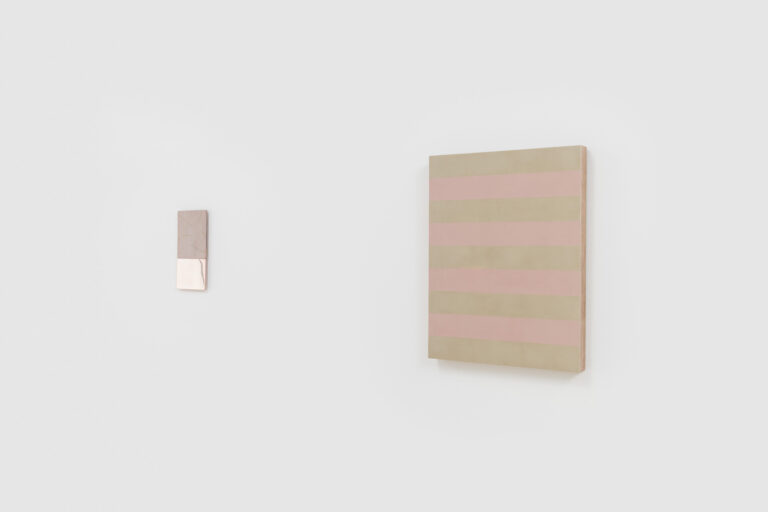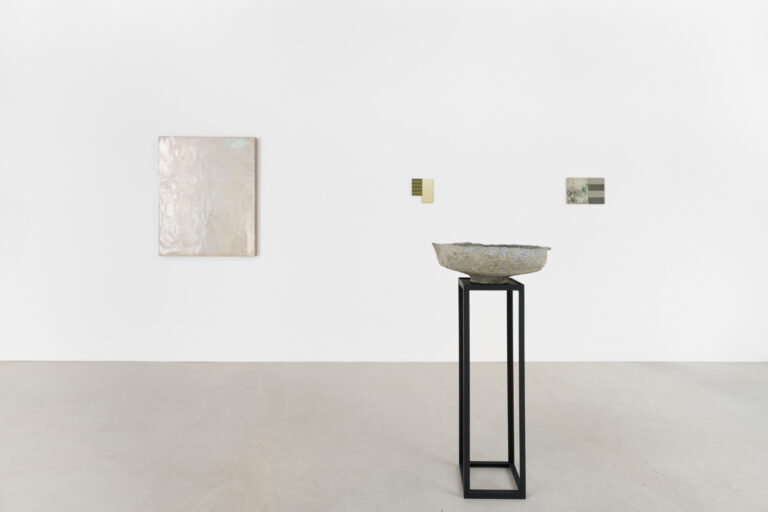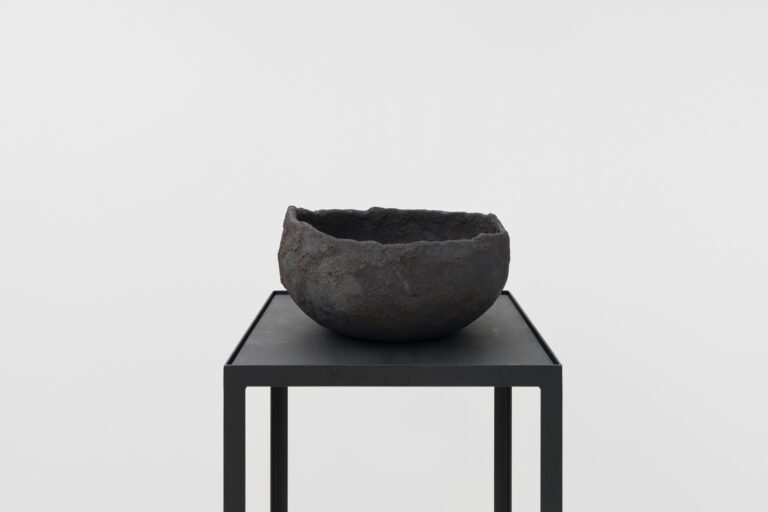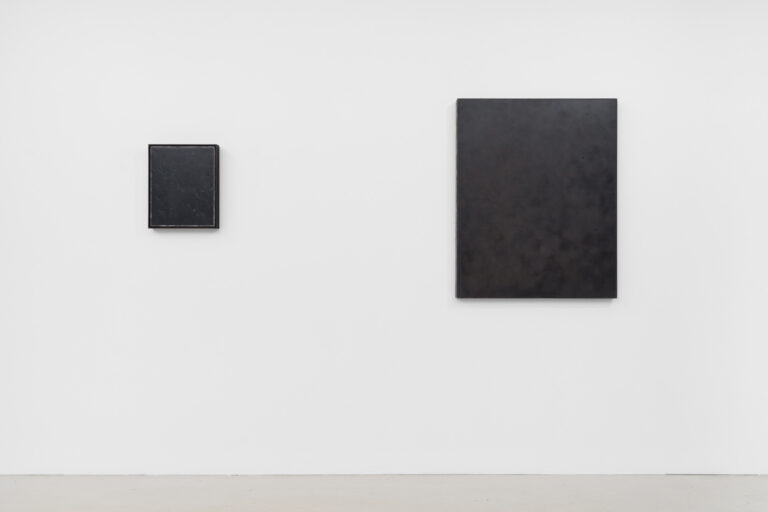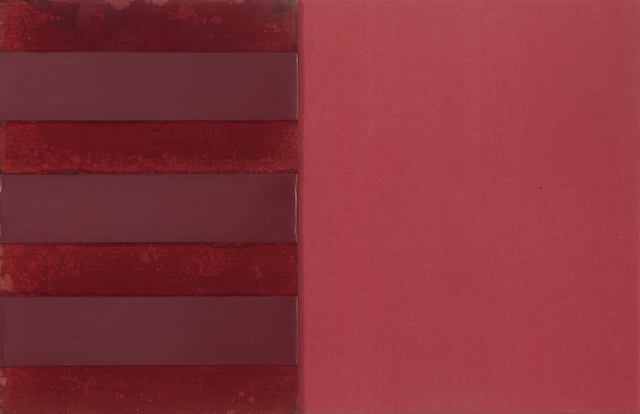
Artworks
Installations
Moving through Kat Shapiro Wood’s A Solid Substance is like walking through a room of artefacts. The works emanate a sacred ambience while they pull us into their quiet vibrations. In this exhibition, the two-dimensional and three-dimensional aspects of Shapiro Wood’s practice come together, and we encounter various substances such as beeswax, pigment, antique book covers, brass, wood, and copper as heightened and transformed. These substances go through a process akin to alchemy, an ancient and medieval practice shrouded in mystery concerning transmuting one type of matter into something different.
Shapiro Wood brushes hot pigmented wax onto a support, often a thick wooden board, ceramic or an old vintage book cover. Encaustic (this painting with hot wax) is stretched across the base by the artist while simultaneously controlling its application, informing its weight and shape to compose a refined articulation of rough-hewn, worn surface against fleshiness. Once solidified, Shapiro Wood carefully strips back fine layers of encaustic to paint and sculpt a new layer. During this repeated process, she leaves some marks of the wrangling to settle and breathe. In works like ‘Untitled (of ardour and vaporous honey),’ she goes back into the encaustic tearing marks into it, creating a surface that looks like cracks in leather-hard clay. In many works, the encaustic is also melded and fused with other materials, such as silk organza. The delicate nature of the fabric is often tested and trialled where in some works like ‘Untitled (palimpsest)’ areas look tougher, worn or burnt like parchment pulled out of the fire; sometimes this is less obvious, and we see tiny ripples of imprinted fabric resemble needlelike veins. Across the show, these textures and patterns inform and play off each other. Shapiro Wood further intensifies relationships between one surface and another by combining two almost opposite panels in one piece to form a diptych where each panel’s striking difference balances the other. In ‘Untitled (and make big shadows I can move in)’, smooth, luminous brass reflects the onlooker and sits beside a dense, moody, pious rectangle. We continue to see faces throughout the show not only in reflections but also sculpted in the three-dimensional works, and they appear as though they have been chiselled from the rock-like formation that they are fixed to.
Colour is another significant aspect of Shapiro Woods practice and her carefully selected palette sets the show’s immediate mood. The predominant palette of A Solid Substance creates a tone that is earthy and romantic. Dusty pinks and the colour of antique roses follow us through. Limestone, forest and copper greens; light golds, rich ivory and creams absorb us into their centres while creating sublime reflections and a sense of expansion. However, acting as powerful accents and anchors is the different blacks, including mottled cool black, onyx, black olive and charcoal, contrasted against deeper, oilier, bottomless blacks. The symphony of black tones playing within the same work and throughout the show permeates a solemnity and profound weightiness. Experiencing these darker works is like standing before an altar. Time moves a little slower.
Time seems central to the show. For Shapiro Wood, creating the works is a battle with and against it. The wax’s liquefaction is a temporary state, and the artist moves fast and intuitively when working with it before the substance completes its transformation. The exhibition also reminds me of time in another sense by transporting me to somewhere ancient and historical. I think of a place with fading lines, human scratch marks aching to leave an imprint, and hard surfaces weathered and softened by the elements. Time also shifts when we view the works in A Solid Substance. We feel ourselves with them in the present moment. Though they are some of Shapiro Wood’s largest works, their scale is still intimate. They relate to the body; they allow the viewer to immerse themselves fully. Rothko once said, ‘A painting is not a picture of an experience, but it is an experience itself’.




